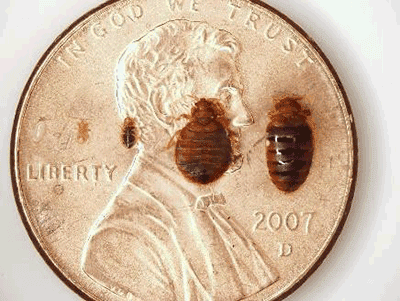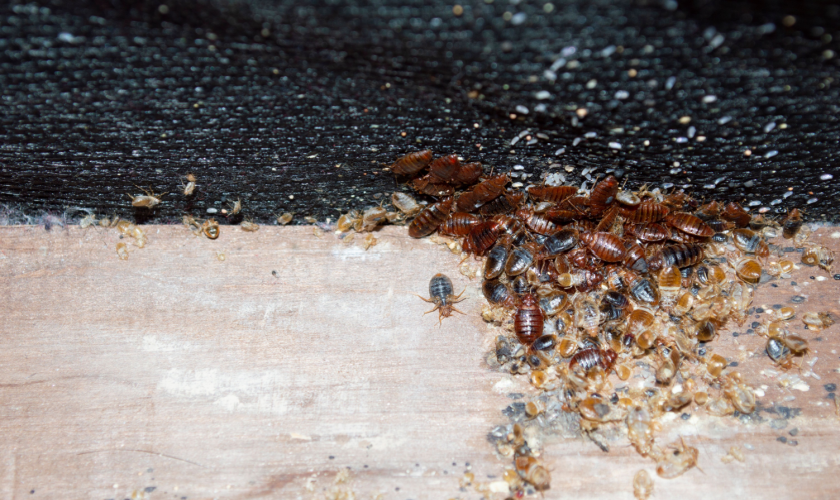Efficient A1 Bed Bug Treatment Houston - Do Away With Bed Vermin
Wiki Article
Understanding the Lifecycle of Pests for Targeted Control Techniques
Comprehending the lifecycle of insects is a basic element of reliable pest administration strategies. With a deeper understanding of how insects flourish and advance, customized control strategies can be made to deal with certain points in their lifecycle, inevitably leading to even more effective insect monitoring results.Relevance of Comprehending Pest Lifecycle
Understanding the lifecycle of bugs is crucial for creating reliable and targeted control approaches in bug monitoring. By understanding the numerous phases a bug goes with from egg to adult, insect control experts can determine susceptible factors in the lifecycle where treatment can be most effective.Moreover, recognizing the specific ecological problems essential for each stage of the parasite's lifecycle can guide decisions on habitat modification or exclusion methods to interrupt the lifecycle and minimize parasite populaces. This understanding allows pest administration professionals to implement proactive actions instead than counting only on reactive treatments, leading to even more long-lasting and sustainable insect control services. Ultimately, a detailed understanding of parasite lifecycles equips insect control specialists to tailor their strategies efficiently, optimizing and reducing ecological effects control results.
Secret Stages in Bug Development
To successfully apply targeted control techniques in insect monitoring, a crucial element hinges on adequately recognizing and understanding the essential phases in bug growth. Pest development usually contains numerous vital phases that are crucial for their lifecycle and management. The initial stage is the egg stage, where insects lay eggs that later on hatch out right into larvae. Larvae after that advance into pupae, a phase where they undertake metamorphosis before becoming adult parasites. Comprehending these stages is essential as it assists in identifying susceptible points in the lifecycle where control steps can be most effective.

Vulnerabilities in Bug Lifecycle
Throughout the different phases of a parasite's lifecycle, unique vulnerabilities emerge that can be strategically targeted for efficient control actions (A1 bed bug removal houston). One important vulnerability exists in the egg phase, where pests are often extra prone to certain insecticides or biological control agents due to their soft outer shell, making them easier targets for intervention. Comprehending these vulnerabilities in the insect lifecycle is important for establishing accurate and efficient control strategies that successfully manage insect populations while decreasing environmental influence.Carrying Out Targeted Control Measures

Implementing targeted control actions normally involves a multi-faceted technique. This may consist of environment modification to make the setting less welcoming to pests, such as removing standing water for insect control or sealing entrance factors for rodents. Furthermore, organic control methods can be used, where all-natural killers or pathogens are presented to keep pest populations in check.
Chemical control, such explanation as the mindful application of pesticides, is one more usual strategy. It is crucial to use these compounds deliberately to minimize environmental effect and prospective injury to non-target species - A1 bed bug extermination houston. Integrated Insect Administration (IPM) methods that incorporate various control steps in a collaborated and sustainable way are commonly one of the most reliable in attaining long-lasting insect administration goals. By implementing targeted control actions based on a detailed understanding of pest lifecycles, pest populaces can be effectively controlled while minimizing risks to human health and the environment.
Boosted Bug Management Practices

In addition, the incorporation of biological control representatives, such as all-natural predators or microorganisms of parasites, can help decrease dependence on chemical pesticides and advertise a more balanced ecological community. Implementing physical barriers and traps can likewise be component of boosted pest administration techniques, providing non-toxic and targeted options for bug control. In addition, using pheromones and other semiochemicals can disrupt pest mating patterns and communication, causing lowered parasite populations in time.
Conclusion
By recognizing crucial A1 bed bug removal houston stages in bug development and susceptabilities in their lifecycle, targeted control procedures can be implemented to lessen pest populations. Improved bug you could check here management methods can help minimize the reliance on broad-spectrum pesticides and advertise even more eco pleasant and sustainable pest control techniques.Understanding the lifecycle of pests is essential for developing efficient and targeted control techniques in pest administration. By comprehending the different phases a bug goes via from egg to grownup, bug control experts can determine vulnerable factors in the lifecycle where treatment can be most effective. Ultimately, a detailed understanding of pest lifecycles equips bug control practitioners to tailor their strategies successfully, reducing environmental effects and making best use of control results.
By implementing targeted control measures based on a complete understanding of bug lifecycles, parasite populaces can be properly regulated while minimizing dangers to human wellness and the atmosphere.
By recognizing crucial phases in pest development and vulnerabilities in their lifecycle, targeted control measures can be carried out to minimize insect populaces.
Report this wiki page